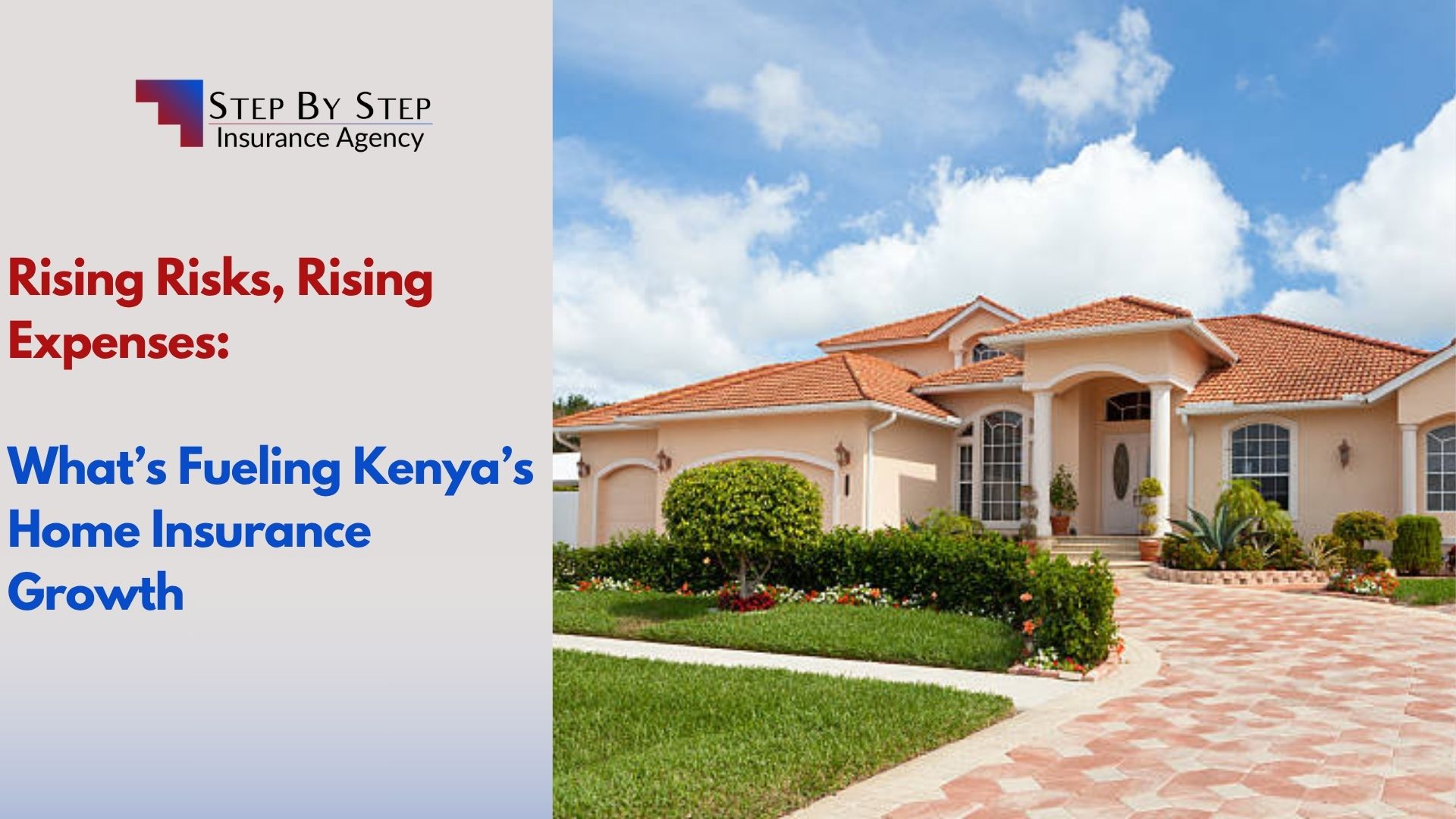Definitive Guide to the Best Senior Medical Insurance in Kenya | Step by Step Insurance
Navigating healthcare in later life demands specialized planning and comprehensive protection. The Best Senior Medical Insurance in Kenya must be a tailored solution that addresses the specific challenges of aging, ensuring both dignity and financial security for senior citizens.
This expert guide from Step by Step Insurance Agency provides the in-depth insights and practical advice necessary to select health coverage built for comfort—managing everything from chronic conditions to unexpected emergencies without financial stress.
Key Takeaways
- Senior medical insurance requires specialized coverage for age-related health concerns
- Lifetime renewability is a critical feature for long-term security
- Pre-existing conditions coverage distinguishes senior plans from standard policies
- High inpatient limits (up to KSh 10 million) provide essential financial protection
- Professional guidance simplifies the complex process of selecting appropriate coverage
Table of Contents
- The Critical Need for Tailored Senior Health Coverage
- Introduction: The Importance of Specialized Senior Health Coverage
- The Essential Criteria for Senior Medical Covers
- Eligibility and Lifetime Assurance
- Financial Protection (Inpatient Limits and Scope)
- Step by Step Insurance: Your Trusted Partner in Senior Health
- Key Coverage Components and Benefits
- Coverage for Existing and Chronic Conditions
- Comprehensive Inpatient and Outpatient Services
- Wellness, Preventative Care, and Ancillary Support
- Emergency and Final Expense Coverage
- Practical Steps for Enrollment and Understanding Policy Terms
- Eligibility Requirements
- Navigating Waiting Periods
- Network Access and Administration
- Conclusion: Choosing Peace of Mind with Step by Step Insurance
Join Our Insurance Community
Connect with others interested in insurance trends and news. Get updates, ask questions, and share experiences in our exclusive WhatsApp group.
Join WhatsApp GroupThe Critical Need for Tailored Senior Health Coverage
For aging parents, retirees, and elderly couples, healthcare needs evolve significantly, demanding a robust financial safety net. Access and dignity should never be compromised.
Finding comprehensive health cover built for comfort in old age is not merely a convenience but a necessity. Specialized medical covers are vital for managing long-term conditions, ensuring prompt treatment, and covering high-cost procedures during retirement.
I. Introduction: The Importance of Specialized Senior Health Coverage
As individuals enter their golden years, the predictability of health often diminishes. Chronic conditions may develop, and the cost of quality medical intervention rises. This means generic health plans often fall short of providing the extensive support required.
The Best Senior Medical Insurance in Kenya is defined by its ability to provide flexible, extensive, and compassionate coverage that adapts to the realities of advanced age.
II. The Essential Criteria for Senior Medical Covers
Choosing the right plan starts with understanding the non-negotiable criteria that distinguish a truly senior-friendly policy from standard medical insurance.
A. Eligibility and Lifetime Assurance: Covering the Full Journey
The foundation of valuable senior coverage lies in the ability to join later in life and, critically, to keep the policy active indefinitely.
- Joining Age: Top covers are specifically designed for senior citizens. Eligibility typically ranges from 60–80 years for principal members, or sometimes 65–85 years. Some schemes cover individuals aged 65–79.
- Lifetime Renewability: This is arguably the most crucial feature. Once a member has joined, the policy offers lifetime renewability, allowing members to continue the cover for life without future age restrictions upon renewal.
- Dependents: Eligibility typically extends to the principal member and one legal spouse. Child dependents are generally covered under separate family plans.
B. Financial Protection (Inpatient Limits and Scope)
The financial capacity of the plan must match the potential severity and cost of senior healthcare issues such as specialized surgery or chronic condition management.
- Diverse Limits: Comprehensive plans offer flexibility, with inpatient cover ranging from KSh 300,000 to KSh 10 million, ensuring options for different budgets and healthcare needs.
- Age-Banded Premiums: Premiums are typically calculated based on the age of the older member (either the principal or the spouse). Installment plans—often up to four—may be available, though the full premium must usually be paid before cover commences.
III. Step by Step Insurance: Your Trusted Partner in Senior Health
The process of securing the Best Senior Medical Insurance in Kenya can be complex. Differences in policy limits, exclusions, waiting periods, and network access make finding the optimal cover overwhelming.
Step by Step Insurance simplifies this landscape by providing clarity and personalized guidance, ensuring you understand exactly what you’re covered for. Customers value accessible, responsive, and simplified service.
Our Commitment to You
- Personalized Solutions: We prioritize service that ensures members receive the support they deserve without compromising care quality.
- Expert Matchmaking: We partner with Kenya’s top underwriters to provide solutions tailored to your needs.
- Seamless Support: We offer efficient application and claims processes for a smooth experience.
Related Resources
Overcoming Challenges in Senior Medical Coverage
Learn how to navigate the 8 major challenges faced when seeking medical cover for seniors in Kenya.
Read MoreGet a Personalized Quote
Receive a customized insurance quote tailored to your specific needs and budget.
Get QuoteContact Our Experts
Speak directly with our insurance specialists for personalized advice.
Contact UsIV. Key Coverage Components and Benefits
The value of a good Senior Medical cover in Kenya lies in its inclusivity—especially for chronic care and specialized services.
A. Coverage for Existing and Chronic Conditions
Senior plans must address the reality of managing existing illnesses, often excluded from standard policies.
- Pre-existing Conditions (PEC): Senior covers are often known as the “friendliest health plan for the elderly that welcomes pre-existing conditions.” Chronic, congenital, and pre-existing conditions are covered in most senior plans.
- Specific Conditions: Includes coverage for HIV/AIDS, gynecological issues, and hernias.
- Waiting Periods: Typically 12 months for chronic and pre-existing conditions.
- Cancer Coverage: Newly diagnosed cancer is generally covered after a one- or two-year waiting period.
B. Comprehensive Inpatient and Outpatient Services
| Service Category | Key Inclusions (Inpatient & Day Care Surgery) |
|---|---|
| Hospitalization | Accommodation (minus NHIF rebate), doctor’s fees (physician, surgeon, anesthetist), ICU/HDU, and theatre charges |
| Treatment & Diagnostics | Prescribed drugs, pathology, X-ray, ultrasound, ECG, CT, PET, and MRI scans |
| Specialized Care | Radiotherapy, chemotherapy, major organ transplant, joint replacement |
| Rehabilitation | Inpatient physiotherapy, rehabilitation, and post-hospitalisation care |
| COVID-19 | Testing provided across most coverage levels, subject to pre-authorization |
C. Wellness, Preventative Care, and Ancillary Support
Modern senior plans emphasize proactive health maintenance and quality-of-life benefits.
- Dental & Optical: Usually included by default.
- Dental: fillings, extractions, root canals, and theatre costs.
- Optical: treatment and frame replacements (e.g., up to KES 8,000 every two years).
- Mental Wellness: Psychiatric care available after 10–12 months waiting period.
- Preventative Care: Includes vaccinations (flu, pneumonia) and medically necessary supplements.
- Value-Added Services:
- Pharmacy-based teleconsultations.
- Doorstep drug delivery.
- Home nursing care (up to 30–60 days post-surgery).
- Annual health checkups.
D. Emergency and Final Expense Coverage
- Emergency Services: Local evacuation and road ambulance included. Air evacuation applies to higher-tier plans (KES 3M+).
- Overseas Treatment: Some premium plans include overseas inpatient referral and airfare if treatment is unavailable locally.
- Last Expense Cover: Often ranges KES 50,000–100,000, easing the financial burden for families.
V. Practical Steps for Enrollment and Understanding Policy Terms
A. Eligibility Requirements
To ensure comprehensive cover, applicants must meet specific criteria:
- Documentation: Submit a signed application form, National ID/Passport, and KRA PIN.
- Medical Report: Applicants aged 55+ must undergo a medical exam at their cost through an approved provider.
B. Navigating Waiting Periods
| Condition or Treatment | Standard Waiting Period |
|---|---|
| Acute illness & outpatient services | 30 days |
| Pre-existing & chronic conditions | 1 year (12 months) |
| Gynaecological/Ophthalmologic/Dental surgery | 1 year |
| Psychiatric care | 10 months – 1 year |
| Newly diagnosed cancer | 1–2 years |
| Organ transplant | 3 years |
| Accidents/Emergencies | No waiting period |
Waivers for Transfers: Members transferring from another insurer or corporate scheme may have waiting periods waived if done within 30 days, subject to documentation (renewal invite, claims statement) and approval.
C. Network Access and Administration
- Widespread Network: Access to 900–1,000+ healthcare providers across Kenya and East Africa.
- Payment Options: Premiums are age-banded and must usually be paid in full before cover starts. Up to 4 installments may be allowed.
Get Personalized Assistance
Our insurance experts are ready to help you find the perfect senior medical coverage for your needs.
VI. Conclusion: Choosing Peace of Mind with Step by Step Insurance
Investing in the Best Senior Medical Insurance in Kenya secures your loved ones’ health and dignity. By focusing on plans offering:
- Lifetime renewability
- Chronic condition coverage
- High inpatient limits (up to KSh 10 million)
- Ancillary benefits like home nursing and drug delivery
—you guarantee lasting quality care.
The complexity of comparing policy terms and benefits makes professional assistance invaluable. Step by Step Insurance Agency serves as your trusted guide, ensuring you select a tailored plan suited for the golden years.
Contact Step by Step Insurance Agency today to receive personalized guidance, compare comprehensive limits, and secure the peace of mind you deserve.


























